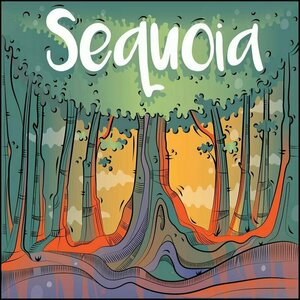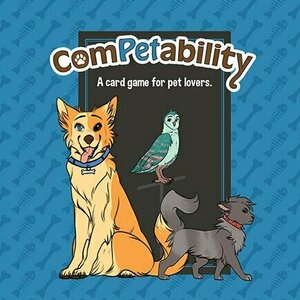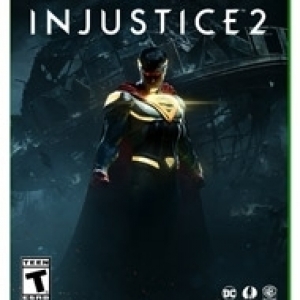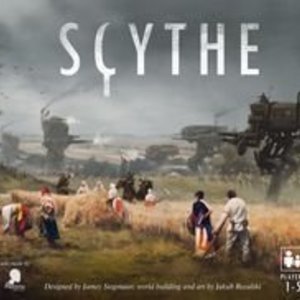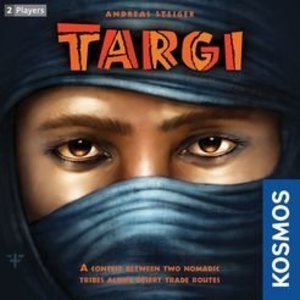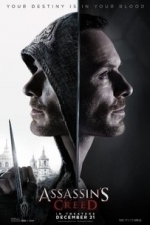Search
Search results
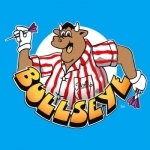
Bullseye - TV Gameshow and Darts
Games and Entertainment
App
*************************************************** * Bullseye - The Official Gameshow App * ...
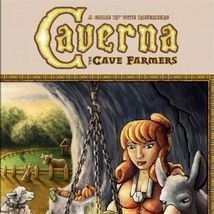
Caverna: The Cave Farmers
Tabletop Game
CLASSIFICATION EDIT Type Strategy Category Animals Economic Fantasy Farming Mechanisms ...
Boardgames UweGames

Airlines Europe
Tabletop Game
Before Ticket to Ride, before Santa Fe Rails, before Union Pacific – yet after Acquire – there...
BoardGames AlanRMoonGames AirlineGames
Purple Phoenix Games (2266 KP) rated Sequoia in Tabletop Games
Mar 17, 2021
Sequoias are some of the largest trees on Earth, growing hundreds of feet tall and living for thousands of years. A few summers ago I had the chance to visit northern California, and spent a day hiking in a forest full of redwoods and sequoias. The sheer size of the trees was breathtaking, and that hike remains high on my list of favorite vacation spots ever. So when I saw a small game based on those behemoth trees, I was instantly transported back to NorCal, and knew I had to give this game a shot!
Sequoia is a game of dice rolling and area majority in which players are trying to grow the largest trees across different forests. To setup the game, lay out the 11 forest cards on the table within reach of all players, and randomly assign a 1st and 2nd place token to each card. Each player receives 5 dice and 20 tree tokens in their chosen color. The game is ready to begin!
On each turn, players will simultaneously roll their 5 dice – keeping the results secret from all other players! After rolling, players will create 2 pairs using 4 of their dice (one will be left out). Everyone reveals their pairs at the same time, and will place a tree token on the card that matches each of their dice pairs. For example, my pairs might be a 5 and a 2, and a 6 and a 6, so I would put a tree token on the 7 and 12 forest cards. Play continues in this manner (rolling dice, creating pairs, and placing tree tokens), until players have placed all of their tokens. Once all tokens have been placed, the game moves to the scoring phase. For each forest card, the 1st and 2nd place tokens go to the players who have the most and 2nd most tree tokens on the forest card. Once all cards have been scored, count up final points, and the player with the most points wins!
I have to start off by saying that Sequoia really surprised me. I was expecting a fast, light game, and that’s what I got. But I also got a game with a fun amount of player interaction and strategy that keeps all players engaged. You may not know what forest cards a player will choose each turn, but you can see who has already played tree tokens to each card, which can help drive your strategy. Do you want to directly compete with everyone and really pile on the tokens to win 1st place on a card? Or do you want to spread your tokens around to as many forest cards as possible, and hopefully maximize points that are otherwise being ignored by opponents? Especially since the 1st and 2nd place tokens are randomly assigned and have differing values, you really don’t know which forests will yield the highest points until the end of the game. Sequoia is a Yahtzee-esque game that allows direct player interaction, and that elevates the overall gameplay for me.
Let’s talk about components for a minute. These components are great. The forest cards are a nice thick card stock. The tree tokens and 1st/2nd place tokens are all good chunky bits that will definitely hold up over time. And the dice are nice little d6’s that are easy to read and fun to manipulate. The color matching with the dice and tree tokens is also really nice, and I appreciate that uniformity for each player color. All in all, a high quality production for such a small game.
If you ask me, I think Sequoia is a perfect filler game. It is super fast to teach and play, the setup/cleanup takes literally seconds, and it provides an engaging and fun gameplay. Beyond being a filler game, it is a great small standalone game as well. Want something fast to play while the oven is pre-heating for dinner? Pull out Sequoia! I also love that it is simple enough for younger players to understand – it is a numbers game, but you can also visually see what your opponents are working towards, and that lends itself to a good amount of player interaction. Definitely a game that I can see getting a decent amount of table time in my group! Purple Phoenix Games gives this one a sky-rocketing 8 / 12. Check it out, you might be surprised!
Sequoia is a game of dice rolling and area majority in which players are trying to grow the largest trees across different forests. To setup the game, lay out the 11 forest cards on the table within reach of all players, and randomly assign a 1st and 2nd place token to each card. Each player receives 5 dice and 20 tree tokens in their chosen color. The game is ready to begin!
On each turn, players will simultaneously roll their 5 dice – keeping the results secret from all other players! After rolling, players will create 2 pairs using 4 of their dice (one will be left out). Everyone reveals their pairs at the same time, and will place a tree token on the card that matches each of their dice pairs. For example, my pairs might be a 5 and a 2, and a 6 and a 6, so I would put a tree token on the 7 and 12 forest cards. Play continues in this manner (rolling dice, creating pairs, and placing tree tokens), until players have placed all of their tokens. Once all tokens have been placed, the game moves to the scoring phase. For each forest card, the 1st and 2nd place tokens go to the players who have the most and 2nd most tree tokens on the forest card. Once all cards have been scored, count up final points, and the player with the most points wins!
I have to start off by saying that Sequoia really surprised me. I was expecting a fast, light game, and that’s what I got. But I also got a game with a fun amount of player interaction and strategy that keeps all players engaged. You may not know what forest cards a player will choose each turn, but you can see who has already played tree tokens to each card, which can help drive your strategy. Do you want to directly compete with everyone and really pile on the tokens to win 1st place on a card? Or do you want to spread your tokens around to as many forest cards as possible, and hopefully maximize points that are otherwise being ignored by opponents? Especially since the 1st and 2nd place tokens are randomly assigned and have differing values, you really don’t know which forests will yield the highest points until the end of the game. Sequoia is a Yahtzee-esque game that allows direct player interaction, and that elevates the overall gameplay for me.
Let’s talk about components for a minute. These components are great. The forest cards are a nice thick card stock. The tree tokens and 1st/2nd place tokens are all good chunky bits that will definitely hold up over time. And the dice are nice little d6’s that are easy to read and fun to manipulate. The color matching with the dice and tree tokens is also really nice, and I appreciate that uniformity for each player color. All in all, a high quality production for such a small game.
If you ask me, I think Sequoia is a perfect filler game. It is super fast to teach and play, the setup/cleanup takes literally seconds, and it provides an engaging and fun gameplay. Beyond being a filler game, it is a great small standalone game as well. Want something fast to play while the oven is pre-heating for dinner? Pull out Sequoia! I also love that it is simple enough for younger players to understand – it is a numbers game, but you can also visually see what your opponents are working towards, and that lends itself to a good amount of player interaction. Definitely a game that I can see getting a decent amount of table time in my group! Purple Phoenix Games gives this one a sky-rocketing 8 / 12. Check it out, you might be surprised!
Purple Phoenix Games (2266 KP) rated Com-Pet-Ability in Tabletop Games
Apr 14, 2020
I have two dogs: a Yorkshire Terrier and a Powderpuff Chinese Crested. I love them dearly, but I just cannot see myself having any more 4-legged mammal pets. We promised our son a pet fish when we move (or a whole aquarium community if my wife will allow), but other than that, we will NOT be adding more pets to our household. So when I heard about a game that requires you to collect cards so that you have five pets to take home I immediate gave the deer-in-headlights look. No, I would not have a pet deer.
ComPetAbility is a card game with two play modes: a mode for players aged 7+ and one for younger gamers. We will be taking a look at the game for older gamers. In this game mode a player is attempting to amass five pets that will be accepting of each other and not cause heck in your house.
DISCLAIMER: We were provided a copy of the game for the purposes of this review. I do not intend to cover every single rule included in the rule book, but will describe the overall game flow and major rule set so that our readers may get a sense of how the game plays. For more in depth rules, you may purchase a copy from the publisher directly or from your FLGS. -T
To setup, shuffle the large deck of cards and deal five to each player. Put the rest of the cards in the middle of the table as a draw pile, flip one over for the “shed” pile. You are now setup and ready to go!
The goal of the game is to begin a turn with five compatible pets (com-pet-able). This is achieved by having five cards whose three icons are satisfied with each other. For instance, turtles are compatible with every other type of animal, so the three icons on turtle cards are all green – compatible with all dogs, cats, and birds. Some dogs are compatible with other dogs but not cats, and some cats are compatible with other cats or kittens but not birds.
So on a turn, a player will choose a card to draw from either the draw pile or the shed pile to add to their hand. A turn ends when that player sheds (discards) a card to the shed pile. Turns continue in this fashion until a player begins their turn with five compatible animals. Players will then add up the points in their hands (the numbers in the upper right corner of the cards) of compatible animals. The player that ended the game with a completed set of five animal pets will score a bonus 10 points to add to their total. Whomever scores the highest is the winner of ComPetAbility!
Components. This is a stack of cards in a tin can. Yep, a tin can with a plastic lid. It’s very novel and lovely, but heck for someone who cares about how the games look and fit on their shelves. The game cards are good quality, which is handy because the game mode aimed at smaller children have them handling the cards a lot too so they have to be able to withstand that abuse. The art is cute, and the layout is easy to understand – even for young ones. No issues with the components from us (aside from the can not being a box, wink wink).
So here’s the thing with this one. We liked it. It is a great idea and is executed well. I don’t think I will pull this one out with adult gamers anymore though. The children’s mode of this game is what I hold dear, as my three-year-old LOVES it and “wins” every time. I have just played this one too many times where a player can be dealt either a winning hand or four of the five cards right away. I’m no designer, so I don’t know how to mitigate that besides chalking it up to “luck of the draw.” But that’s a negative for me, and perhaps I shouldn’t let it detract from an otherwise enjoyable game, but it’s what comes to mind every time I see on the shelf as a possibility for Game Night. However, if you like the theme, the style, and ease of play between two different modes then check it out. It can be used as a light filler, a gateway game, or children’s game. So for the pure flexibility of this one, Purple Phoenix Games gives it a canned (hehe) 13 / 18. The turtles are really cute, but the hybrid animals are kinda weird-lookin’.
ComPetAbility is a card game with two play modes: a mode for players aged 7+ and one for younger gamers. We will be taking a look at the game for older gamers. In this game mode a player is attempting to amass five pets that will be accepting of each other and not cause heck in your house.
DISCLAIMER: We were provided a copy of the game for the purposes of this review. I do not intend to cover every single rule included in the rule book, but will describe the overall game flow and major rule set so that our readers may get a sense of how the game plays. For more in depth rules, you may purchase a copy from the publisher directly or from your FLGS. -T
To setup, shuffle the large deck of cards and deal five to each player. Put the rest of the cards in the middle of the table as a draw pile, flip one over for the “shed” pile. You are now setup and ready to go!
The goal of the game is to begin a turn with five compatible pets (com-pet-able). This is achieved by having five cards whose three icons are satisfied with each other. For instance, turtles are compatible with every other type of animal, so the three icons on turtle cards are all green – compatible with all dogs, cats, and birds. Some dogs are compatible with other dogs but not cats, and some cats are compatible with other cats or kittens but not birds.
So on a turn, a player will choose a card to draw from either the draw pile or the shed pile to add to their hand. A turn ends when that player sheds (discards) a card to the shed pile. Turns continue in this fashion until a player begins their turn with five compatible animals. Players will then add up the points in their hands (the numbers in the upper right corner of the cards) of compatible animals. The player that ended the game with a completed set of five animal pets will score a bonus 10 points to add to their total. Whomever scores the highest is the winner of ComPetAbility!
Components. This is a stack of cards in a tin can. Yep, a tin can with a plastic lid. It’s very novel and lovely, but heck for someone who cares about how the games look and fit on their shelves. The game cards are good quality, which is handy because the game mode aimed at smaller children have them handling the cards a lot too so they have to be able to withstand that abuse. The art is cute, and the layout is easy to understand – even for young ones. No issues with the components from us (aside from the can not being a box, wink wink).
So here’s the thing with this one. We liked it. It is a great idea and is executed well. I don’t think I will pull this one out with adult gamers anymore though. The children’s mode of this game is what I hold dear, as my three-year-old LOVES it and “wins” every time. I have just played this one too many times where a player can be dealt either a winning hand or four of the five cards right away. I’m no designer, so I don’t know how to mitigate that besides chalking it up to “luck of the draw.” But that’s a negative for me, and perhaps I shouldn’t let it detract from an otherwise enjoyable game, but it’s what comes to mind every time I see on the shelf as a possibility for Game Night. However, if you like the theme, the style, and ease of play between two different modes then check it out. It can be used as a light filler, a gateway game, or children’s game. So for the pure flexibility of this one, Purple Phoenix Games gives it a canned (hehe) 13 / 18. The turtles are really cute, but the hybrid animals are kinda weird-lookin’.
Nick Friesen (96 KP) rated Injustice 2 in Video Games
Jul 14, 2017
Large Roster (4 more)
Simple but Deep Mechanics
Worthwhile and Well-written Campaign
Loot in a Fighting Game!
Harley Quinn Kicks Ass
Superhero Brawling at its Finest
As a fighting game, Injustice 2 is near perfect. As a DC superhero story, it's better than most movies. The fighting mechanics are sharp and simple, while still offering plenty of depth and nuance for dedicated fighting fans. Most of the character design is great (you may have heard about or seen the new "Hot Topic Joker"), and all serves to fit the alternate Injustice universe. The only real gripe I have with the game is that loot acquisition is randomly decided through loot boxes called Mother Boxes. These boxes drop through completing single-player missions in the Multiverse, but it could have been a lot more fun if loot dropped from defeated enemies like most other loot-based single player experiences. It's a minor complaint, I admit, but something that throws off the experience for me. In the end, Injustice 2 is a fantastic game that fights to be innovative in a crowded fighting game market. It largely succeeds, and due to the Multiverse and the loot you'll never run out of things to do.
Peter Russell (61 KP) rated Scythe in Tabletop Games
Mar 13, 2019
The best mix of many board games
This game has so much going for it and by far is my favorite game on my shelf right now. First off, just looking at and opening the box, the artwork is fantastic. I bought the artbook for the game just because I wanted more of the art. Next, mechanics of the game. Each player has a choice of what unique pair of actions they will take in a turn. A turn consists of:
1) Choosing a block of actions that said player had not chosen last turn
2) Choosing a top level action from chosen block
3) choosing a bottom level action of chosen block.
These action range from creating and placing workers, mechs or buildings, resource generation, or doing something that would initiate combat (usually moving). There are many different strategies to win, whether through ecnomics or military domination. Each play through is unique.
I highly recommend getting all expansions for uncreased play variety as well as the Broken Token organizer, which reduces setup time for 30 minutes to 5 minutes. Other items that really enhance the gameplay are metal coins as well as realistic resources from stonemaier games
1) Choosing a block of actions that said player had not chosen last turn
2) Choosing a top level action from chosen block
3) choosing a bottom level action of chosen block.
These action range from creating and placing workers, mechs or buildings, resource generation, or doing something that would initiate combat (usually moving). There are many different strategies to win, whether through ecnomics or military domination. Each play through is unique.
I highly recommend getting all expansions for uncreased play variety as well as the Broken Token organizer, which reduces setup time for 30 minutes to 5 minutes. Other items that really enhance the gameplay are metal coins as well as realistic resources from stonemaier games
Peter Shephard (2822 KP) rated Terraforming Mars: Colonies in Tabletop Games
Jun 4, 2019
Nice variation
Terraforming Mars itself has been the goal; to support it, a series of colonies and outposts have been established throughout the Solar System; whether it is to generate a cash stream from Lunar, or the Jovian moons, they can all assist with the ultimate goal.
The mechanic for sending out the trade fleet is simple and straightforward; the benefits of trading are suitably varied and worthwhile, especially if you manage to get a good supply of Energy. With a 1-2 player game, having a colony is a bit of hit-and-miss; you dont gain the trade bonus if you trade with yourself, and unless your opponent REALLY wants your trade item, they wont trade with you. For a 3+ player game, it is absolutely worth it, as each colony can only trade with 1 fleet, and with only 2 more outposts than players (normally), it can get a bit crowded in the outer solar system.
There are also enough Colonies that it is unlikely that you will play the same game twice (10 or 12, if I remember right!).
Apart from Prelude, in my opinion, Colonies adds the most variation to the base game, and is well worth adding.
The mechanic for sending out the trade fleet is simple and straightforward; the benefits of trading are suitably varied and worthwhile, especially if you manage to get a good supply of Energy. With a 1-2 player game, having a colony is a bit of hit-and-miss; you dont gain the trade bonus if you trade with yourself, and unless your opponent REALLY wants your trade item, they wont trade with you. For a 3+ player game, it is absolutely worth it, as each colony can only trade with 1 fleet, and with only 2 more outposts than players (normally), it can get a bit crowded in the outer solar system.
There are also enough Colonies that it is unlikely that you will play the same game twice (10 or 12, if I remember right!).
Apart from Prelude, in my opinion, Colonies adds the most variation to the base game, and is well worth adding.
Red Otter (340 KP) rated Targi in Tabletop Games
Jun 6, 2019
Targi is a 2-player game where players play as opposing desert tribes. Both sides try to collect as many points, either through grabbing additional VP tokens or by gathering various tribe cards. These tribe cards belong to one of 5 sets, with additional points for gathering sets, either of the same kind or one of each.
The game is played with a with an ever changing 5x5 grid of goods and tribe cards, with a outer ring of cards that can almost ways been selected. A robber goes around blocks off some of the outer rings of cards and serves as a timer for the game. The worker placement portion is interesting, 3 workers are placed on the outside ring, and the intersections they create between themselves are where you ace your next two.
Targi is a relatively simple game with depth. It requires outthinking your opponent as it is relatively easy to deny the other player what they want, but not necessarily get what you need at the same time. The balance comes from trying to acquire points while at the same time getting the resources to buy those cards in the first placrz especially with the heavy emphasis on points from set collections. A great game for couples
The game is played with a with an ever changing 5x5 grid of goods and tribe cards, with a outer ring of cards that can almost ways been selected. A robber goes around blocks off some of the outer rings of cards and serves as a timer for the game. The worker placement portion is interesting, 3 workers are placed on the outside ring, and the intersections they create between themselves are where you ace your next two.
Targi is a relatively simple game with depth. It requires outthinking your opponent as it is relatively easy to deny the other player what they want, but not necessarily get what you need at the same time. The balance comes from trying to acquire points while at the same time getting the resources to buy those cards in the first placrz especially with the heavy emphasis on points from set collections. A great game for couples
David McK (3610 KP) rated Assassin's Creed (2016) in Movies
Jun 9, 2019 (Updated Jan 18, 2020)
What. On. Earth.
Another (IMO) failed attempt to bring a video game - in this case, Ubisofts long-running Assassin's Creeds series - to the big screen.
For those not in the know (anyone?), those games sees the player taking the part of a character reliving the memories of one of their ancestors through a device known as the animus, with a whole alt-past mysticism behind it all, and with a centuries-long war between the Templars (the bad guys, in all bit one game) and the Assassin's bubbling along in the background.
And, right there's, is why I think most of these video-game-to-movies adaptations fail: in the game, you're (as the player) are an active participant whereas in the movie theatre you're passive.
It probably also doesn't help that the film seems largely based on one of the more universally-disliked portions of the source material (i.e. the present day parts, which have more or less been completely dropped in the games that came out after this film) rather than the more-interesting past! On the plus side, however, at least they went for a new period of history to visit instead of something already covered by the games.
Another (IMO) failed attempt to bring a video game - in this case, Ubisofts long-running Assassin's Creeds series - to the big screen.
For those not in the know (anyone?), those games sees the player taking the part of a character reliving the memories of one of their ancestors through a device known as the animus, with a whole alt-past mysticism behind it all, and with a centuries-long war between the Templars (the bad guys, in all bit one game) and the Assassin's bubbling along in the background.
And, right there's, is why I think most of these video-game-to-movies adaptations fail: in the game, you're (as the player) are an active participant whereas in the movie theatre you're passive.
It probably also doesn't help that the film seems largely based on one of the more universally-disliked portions of the source material (i.e. the present day parts, which have more or less been completely dropped in the games that came out after this film) rather than the more-interesting past! On the plus side, however, at least they went for a new period of history to visit instead of something already covered by the games.
